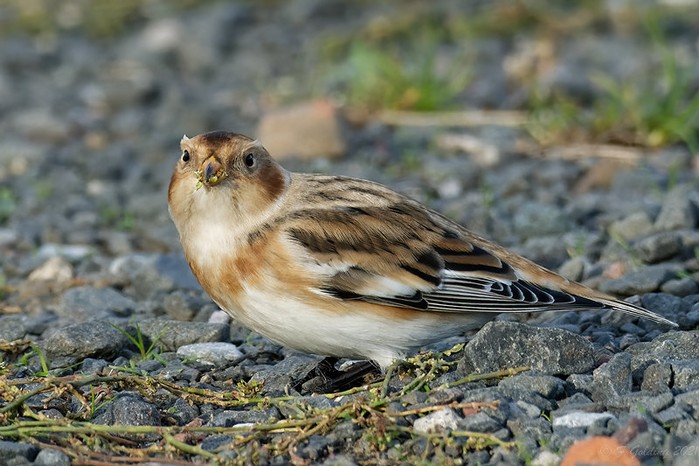The Female of the Species Is... Understudied
A major new perspective calls on ornithologists to correct long-standing male bias in avian research, with real-world consequences for conservation

Looking beyond the male standard
For decades, ornithology has largely relied on studies of male birds to draw conclusions about whole species - an oversight with far-reaching implications. A new article in Ibis by Joanna Wu and colleagues argues that overlooking female birds in ecological and behavioural research distorts our understanding of avian biology and risks undermining conservation outcomes. The authors outline how sex-specific behaviours, movements, survival rates, and habitat preferences often diverge sharply between males and females. When these differences are ignored, the result can be flawed data, misguided management strategies, and missed opportunities for conservation.
Birds are among the best-studied organisms in ecology, but even in this group, the assumption that one sex can represent both has gone largely unchallenged. The tendency to default to ‘species-level’ analysis, combined with practical and cultural biases that favour the more visible, vocal, or strikingly plumaged males, means female birds remain underrepresented in the scientific record. As a consequence, our ecological models, management plans, and even our basic field guides are built on incomplete foundations.
Female birds sing, disperse, and die differently
Much of what we assume about sex roles in birds is outdated or simply incorrect. While it was long thought that only male birds sing, research now shows that female song is widespread - likely the ancestral state in most songbirds. Across many avian lineages, reproductive roles are more balanced than Darwin’s 19th-century writings suggested. In some groups, such as shorebirds and raptors, female-biased parental care or ornamentation is common.
Females are also more likely to disperse longer distances and suffer lower survival rates. These patterns have serious implications for population dynamics, especially in threatened species where female mortality may drive declines. Yet because most tracking studies focus on males, female movements are less understood and often misrepresented in migration models.
Overlooking females can cost lives and habitats
One of the most striking findings concerns how conservation strategies may inadvertently harm the very populations they seek to protect. In some species, males and females use different habitats during the non-breeding season. Female Golden-winged Warblers, for instance, prefer lower elevation forests that are more prone to logging - but these areas often lack formal protection, leading to disproportionate habitat loss for females.
Climate change adds a further layer of complexity. Timing of arrival at breeding grounds, survival during extreme weather events, and responses to shifting food availability can all differ by sex. If conservationists fail to account for these differences, interventions may prove ineffective or even harmful.
What needs to change
Wu and colleagues propose eight steps to remedy the imbalance. These include teaching birders and researchers to identify female birds more confidently, expanding field methods to capture data on both sexes, and using DNA analysis to determine sex in monomorphic species. Crucially, the authors stress the need to support diverse research teams and broader geographic coverage - moving beyond a male-dominated, northern-hemisphere perspective that has shaped much of ornithology to date.
They also call on citizen scientists and birding communities to share knowledge of female traits, which often goes unrecorded in formal studies. Platforms like eBird could facilitate this by allowing sex to be recorded at the point of entry.
Rethinking assumptions for better science
The article delivers a strong message: scientific objectivity requires representation. By studying only half of bird populations, ecologists are drawing incomplete - and potentially misleading - conclusions. The authors argue for a shift in mindset: rather than treating female birds as a secondary concern, they must be recognised as central to understanding species ecology, evolution, and conservation.
Integrating sex-specific data into scientific research is not just a matter of equity or accuracy. It is essential for the success of conservation efforts in a rapidly changing world. As the authors conclude, “the lack of attention to these differences has real-world implications.”
June 2025
Share this story







